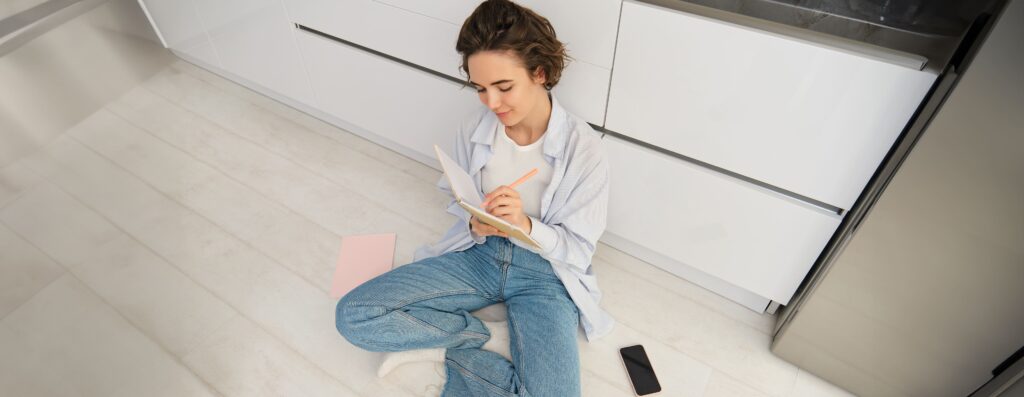Residential rehab offers a sanctuary for healing, a place where individuals grappling with addiction can find professional support and compassionate care.
The journey to recovery is deeply personal, and choosing the right rehabilitation approach pivotal.
In this article, I present the benefits and success rates of residential rehab, illuminating its role as a compelling option in addiction treatment.
With a focus on comprehensive care, this form of rehab not only addresses the physical aspects of addiction but also fosters emotional and psychological healing, setting the foundation for a sustainable path to recovery.

Understanding Residential Rehab
Residential rehabilitation, commonly known as residential rehab, is a comprehensive treatment program for individuals struggling with addiction.
Unlike outpatient programs, where individuals return home after daily treatment, residential rehab in LA involves living at the treatment facility.
This immersive approach is designed to provide a supportive and controlled environment, crucial for individuals in the early, often most challenging, stages of recovery.
At its core, residential rehab is about creating a safe and structured environment where the focus is solely on recovery. The program typically includes a combination of medical care, therapy, counseling, and life skills training.
The setting is designed to minimize triggers and distractions that might lead to relapse, thus offering a unique space where individuals can concentrate on healing both physically and mentally.
A key difference between residential rehab and outpatient treatment lies in the intensity and scope of care.
Differences Between Types of Rehab
Outpatient programs, while flexible and less disruptive to daily life, may not provide the same level of comprehensive support found in residential settings.
For those with severe addiction or those who have struggled with sustained recovery in the past, the round-the-clock care in residential rehab can be particularly beneficial.
Additionally, being removed from potentially harmful environments allows individuals to focus entirely on their rehabilitation journey.
Length of Stay
The duration of stay in residential rehab varies, typically ranging from 30 to 90 days, though some programs may last longer based on individual needs.
The length of stay is often determined by several factors, including the severity of the addiction, the presence of co-occurring disorders, and the individual’s progress in the program.
What To Expect
Upon entering a residential rehab facility, individuals can expect an initial assessment to tailor a treatment plan suited to their specific needs.
The daily schedule in these programs is usually structured, including various therapeutic sessions like individual counseling, group therapy, and sometimes alternative therapies such as art or equine therapy.
In addition to therapy, residential rehabs often focus on building healthy habits, offering activities like fitness sessions, nutritional guidance, and mindfulness practices.
Overall, residential rehab provides a comprehensive, immersive approach to addiction treatment, offering the tools and support necessary for long-term recovery.
The combination of a structured environment, professional care, and a focus on holistic healing makes it an effective choice for many on their journey to sobriety.

Benefits of Residential Rehab
Residential rehab offers a multifaceted approach to addiction recovery, encompassing various benefits that contribute significantly to the rehabilitation process.
Among these, the structured environment, comprehensive care, peer support, and a setting with fewer distractions stand out as key components.
Structured Environment
The structured setting of residential rehab is one of its most defining and beneficial aspects. Understanding the role of the environment in addiction recovery is crucial, this meticulously designed environment aims to establish routine and predictability, elements often missing in the lives of those battling addiction.
A typical day in residential rehab includes scheduled therapy sessions, activities, and rest periods, all organized to provide a sense of stability and order.
This structure aids in recovery by reducing the chaos that often accompanies addiction, thereby allowing individuals to focus on their healing journey.
The predictability of daily routines also helps in developing new, healthy habits and coping strategies that are essential for long-term sobriety.
Comprehensive Care
Residential rehab takes a holistic approach to treatment, addressing not just the physical aspects of addiction, but also the psychological and emotional facets.
This comprehensive care includes a range of therapies such as cognitive-behavioral therapy, individual counseling, group sessions, and sometimes alternative therapies like yoga or meditation.
The continuous medical supervision provided in residential settings ensures that any physical health issues related to addiction are promptly addressed.
Moreover, mental health professionals are always available to assist with co-occurring disorders like depression or anxiety, which often accompany addiction.
This all-encompassing approach ensures that individuals receive the support they need for all aspects of their health, contributing to a more robust and resilient recovery.
Peer Support
One of the most significant benefits of residential rehab is the community of peers who are also on the path to recovery.
Being surrounded by others who understand the challenges of addiction creates a supportive and empathetic atmosphere.
Group therapy sessions and shared experiences foster a sense of camaraderie and mutual support, which can be incredibly empowering.
This peer support network plays a crucial role in recovery, as it provides individuals with a sense of belonging and understanding that is often lacking in their lives.
The shared journey of recovery can inspire and motivate residents, as they witness the progress of their peers and offer encouragement to each other.
Fewer Distractions
Residential rehab provides an environment isolated from the external triggers and stresses that can contribute to substance abuse.
By removing these distractions, individuals can fully concentrate on their recovery without the temptations and pressures of their usual environment.
This separation from the outside world allows residents to break free from old patterns and focus entirely on developing new, healthier ways of living.
The absence of everyday stressors also means that individuals can invest all their energy into the recovery process, attending therapy sessions and engaging in self-reflection without the interruptions of daily life.
In summary, residential rehab offers a unique and effective setting for overcoming addiction.
Its structured environment provides stability, comprehensive care addresses all aspects of health, peer support fosters a supportive community, and the absence of distractions allows for focused recovery.
These elements combine to create a powerful framework for healing and long-term sobriety.

Success Rates of Residential Rehab
Long-term recovery is a continual process that extends well beyond the initial residential treatment period.
Effective residential rehab programs emphasize relapse prevention strategies, equipping individuals with the tools and skills needed to maintain sobriety in the outside world.
This includes ongoing therapy, support groups, and in some cases, transitional arrangements like sober living homes.
Furthermore, successful long-term recovery often involves comprehensive aftercare programs. These programs might include regular check-ins, alumni support groups, and continued counseling.
The importance of aftercare in maintaining long-term sobriety is well-documented, with studies showing that continued participation in support programs significantly reduces the risk of relapse.
While residential rehab is not a one-size-fits-all solution, its intensive nature, combined with a structured environment and comprehensive care, often leads to higher success rates compared to other treatment options.
The success of residential rehab is influenced by the duration of treatment, the type of program, and the availability of aftercare support, all of which are crucial for long-term recovery and relapse prevention.
Residential rehab programs show varied success rates, reflecting the complex nature of addiction recovery. Here’s a summary of the key statistics:
Overall Success Rates
A significant number of individuals who complete alcohol treatment through residential rehab remain sober in the initial months post-rehab.
Specifically, about 89% report sobriety in the first month following treatment. As for drug users, between 85% and 95% report continued sobriety nine months after rehab.
Furthermore, rehab success rates increase when individuals undergo detox before starting treatment, with a success rate of 68%.
Relapse Rates
Relapse is a common part of the recovery process. Studies indicate that relapse rates for substance abuse disorders range from 40 to 60%.
This rate is comparable to relapse rates for other chronic diseases such as asthma or hypertension.
It’s important to note that relapse does not signify treatment failure but rather indicates the need for continued or adjusted treatment.
Long-Term Sobriety
The probability of maintaining long-term sobriety improves with sustained abstinence. For instance, nearly 9 out of 10 people who remain sober for two years can maintain their sobriety for ten years.
Additionally, after completing initial treatment, about 60% of individuals seek additional care within the following six years, suggesting an ongoing commitment to recovery.
Factors Influencing Recovery
Duration of treatment is a significant factor. Longer treatment durations, typically at least three months, are associated with higher success rates.
For example, 40 to 50% of individuals with frequent heroin and cocaine use reportedly stopped using entirely one-year post-treatment, after undergoing treatment for at least three months.
Recovery Milestones
Many individuals in recovery achieve significant life milestones.
About 80% of people with substance abuse issues have reported major accomplishments during their recovery journey, such as acquiring higher education, securing better jobs, and becoming more involved with their families.
These statistics underscore the effectiveness of residential rehab in providing a supportive environment conducive to recovery, although the journey to long-term sobriety often involves ongoing commitment and may include periods of relapse.

Personalization of Treatment in Residential Rehab
The personalization of treatment in residential rehab is a cornerstone in the journey to recovery, as it acknowledges the unique circumstances and needs of each individual.
Tailoring treatment involves creating a personalized plan that addresses specific aspects of an individual’s addiction, co-occurring mental health disorders, personal history, and other factors that contribute to substance use.
Residential rehabs offer a variety of therapies to cater to the diverse needs of their residents.
Cognitive Behavioral Therapy (CBT) is commonly used to help individuals recognize and change negative thought patterns and behaviors related to substance use.
Dialectical Behavior Therapy (DBT) focuses on improving emotional regulation and developing coping mechanisms.
Eye Movement Desensitization and Reprocessing (EMDR) is particularly effective for individuals with trauma-related addiction, helping them process and integrate traumatic memories.
Additionally, family therapy is often a crucial component, addressing the dynamics that may contribute to addiction and facilitating healing within the family unit.
The role of personalized care in improving outcomes in residential rehab cannot be overstated. When treatment plans are tailored to the individual, they are more likely to engage fully in the recovery process.
Personalized treatment plans can lead to better adherence to the program, more significant improvements in mental and physical health, and a higher likelihood of maintaining long-term sobriety.
By addressing the multifaceted nature of addiction and its underlying causes, personalized treatment in residential rehab lays the foundation for a more sustainable and effective recovery process.
In summary, the personalization of treatment in residential rehab, through a variety of therapies and a focus on individual needs, plays a vital role in enhancing the efficacy of addiction treatment and supporting long-term recovery.

Challenges and Considerations
Embarking on the journey of residential rehab involves navigating a set of challenges and considerations, each crucial to the recovery process.
Cost
One common concern is the cost of treatment. Residential rehab can be expensive, given the comprehensive care and facilities provided.
Individuals and their families need to explore various funding options, such as insurance coverage, financing plans, or seeking programs that offer sliding scale fees based on income.
Some rehab centers also provide scholarships or grants to help offset costs.
Fear of Isolation
Another concern is the fear of isolation. Leaving one’s familiar environment and entering a residential facility can be daunting.
However, it’s essential to recognize that this temporary isolation is a strategic part of the healing process.
It allows individuals to focus solely on recovery without the distractions or triggers of their everyday environment.
Moreover, the supportive community within rehab centers often helps mitigate feelings of loneliness.
Aftercare Planning
Aftercare planning is a critical aspect of the recovery journey. Effective aftercare can significantly reduce the risk of relapse and support long-term sobriety.
This might include ongoing therapy, support groups, and lifestyle adjustments to maintain the progress made during treatment.
Successful rehab centers will work with individuals to develop a comprehensive aftercare plan tailored to their specific needs.
Other Factors
When choosing the right residential rehab facility, it’s important to consider factors such as the types of treatment offered, the qualifications of the staff, the facility’s success rates, and the overall approach to recovery.
Personal preferences regarding location, environment, and specific services should also be taken into account.
Seeking reviews or testimonials from former patients can provide valuable insights into the effectiveness and quality of the program.
In summary, while there are challenges and considerations in choosing and participating in residential rehab, careful planning and informed choices can lead to a more successful and sustainable recovery journey.

Success Stories
The transformative power of residential rehab is vividly illustrated through the experiences of those who have completed their treatment.
Each story is a testament to the positive impact that comprehensive addiction treatment can have on an individual’s life.
One individual, Malorie, expressed profound gratitude to the center she attended and its staff, from admissions to housekeepers, for their genuine care that played a pivotal role in saving her life.
This story highlights the importance of a supportive and caring treatment environment in the recovery journey.
Denise’s story reflects the necessity of being ready and willing to change every aspect of one’s life for a successful recovery.
She emphasized how crucial it was to let go of old friends and habits to avoid the fast track back to destructive behaviors.
Her experience underlines the importance of comprehensive lifestyle changes in maintaining sobriety.
In another instance, Wells shared how the center they went to stood out from other rehabs they had attended.
The center’s approach and the ongoing support from counselors, even two years post-recovery, were crucial factors in their successful journey to sobriety.
This story highlights the importance of ongoing support and personalized care in addiction treatment.
These narratives collectively underscore the profound impact of residential rehab on individuals struggling with addiction. They reflect:
- The journey of overcoming addiction
- The importance of a supportive and caring treatment environment
- The need for complete lifestyle changes
- The value of ongoing support and personalized care in fostering successful recovery

Key Takeaways
- Residential rehabilitation, commonly known as residential rehab, is a comprehensive treatment program for individuals struggling with addiction.
- Residential rehab is about creating a safe and structured environment where the focus is solely on recovery. The program typically includes a combination of medical care, therapy, counseling, and life skills training.
- For those with severe addiction or those who have struggled with sustained recovery in the past, the round-the-clock care in residential rehab can be particularly beneficial.
- The structured environment, comprehensive care, peer support, and a setting with fewer distractions stand out as key components.
- The success of residential rehab is influenced by the duration of treatment, the type of program, and the availability of aftercare support, all of which are crucial for long-term recovery and relapse prevention.
- Tailoring treatment involves creating a personalized plan that addresses specific aspects of an individual’s addiction, co-occurring mental health disorders, personal history, and other factors that contribute to substance use.
- While there are challenges and considerations in choosing and participating in residential rehab, careful planning and informed choices can lead to a more successful and sustainable recovery journey.

Sources
Addiction Recovery Statistics. Addiction Help.com
Drug Rehab Statistics & Success Rates. Addiction Group. 2023
Sobriety, Relapse, and Addiction Recovery Statistics in 2023. Addiction Group

















